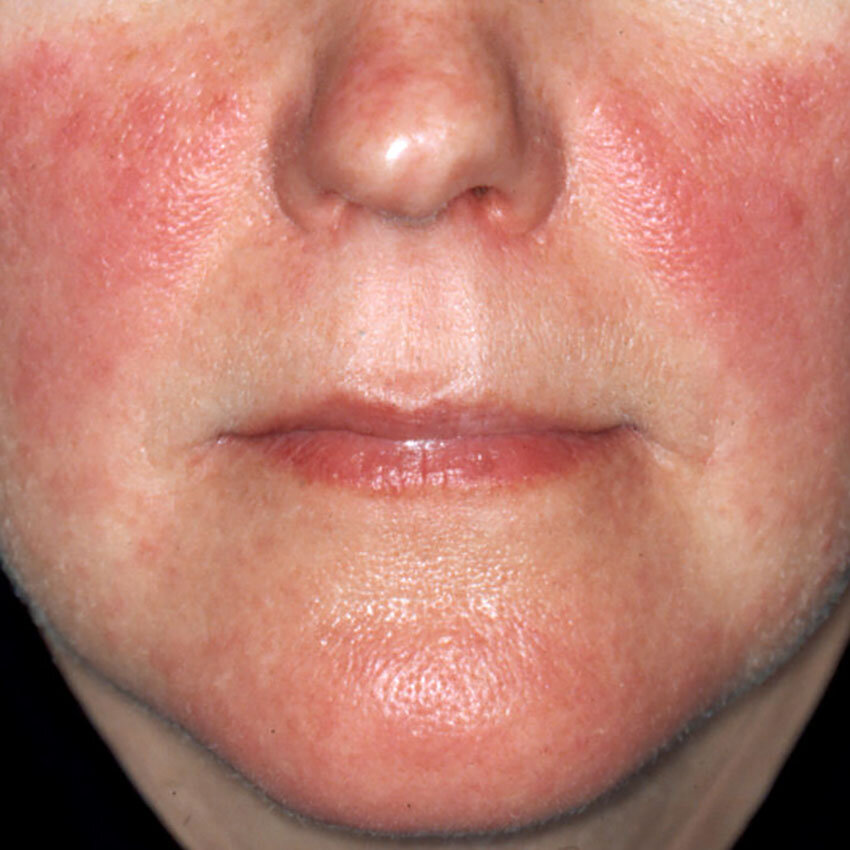Rosacea "Look-Alikes": Is Your Skin Condition Rosacea or Something Else?
Storytime:
You’ve had clear skin your whole life. Then one day you wake up and suddenly your face has what appears to be a red, inflamed, itchy rash. You try the creams - aloe, cortisone, Benadryl - but the issue gets worse. Now it’s developed into little bumps with whiteheads. “Oh, Acne!” you think. So you apply tea tree oil, salicylic acid, and get an exfoliator to “clear those clogged pores.” Only now, the bumps are cystic, irritated, and burning.
What is happening? Why is my skin doing this??
Sound familiar? That’s because this is typically how rosacea starts—out of the blue, with a gradual worsening no matter what you try.
But even more confusing than how Rosacea starts, is how to identify it in the first place. Many people are much more familiar with terms like acne or dermatitis. Rarely is anyone even aware of what Rosacea is until they’ve been diagnosed with it. In today’s post, I’m going to dive into some “look-alike” skin conditions that are nearly identical in appearance, but require completely different treatments than Rosacea.
Contact Dermatitis
The term “dermatitis” often refers to itchy, red, or swollen skin—the hallmarks of rosacea. Similarly, dermatitis can begin to ooze, crust, and flake if untreated. However, unlike rosacea, contact dermatitis is often a result of environmental factors and once treated will clear up and go away.
How to tell the difference?
Usually, dermatitis is caused on the face when using a product(s) that the skin ends up having an allergic reaction to. If you’ve recently started using new skincare (within one to two months), try removing it for a couple of weeks to see if there is any improvement. If not, consult with a dermatologist to determine if what you have is rosacea or not. Furthermore, diagnosis of contact dermatitis can be supported by patch testing to reveal any allergies to foreign substances.
Lupus
Lupus is often confused for rosacea and vice versa because of the characteristic “butterfly-shaped rash” both conditions share. However, outside of this symptom, the two conditions are completely different.
How to tell the difference?
Lupus is an inflammatory disease that affects joints, kidneys, blood cells, the brain, heart and lungs. Skin is just one small part of the disorder whereas it’s the sum of the disorder in Rosacea. Symptoms of Lupus include: fever, joint pain, chest pain, headache, and dry eyes in addition to facial rash and skin lesions. If you are experiencing any of these symptoms, consult your doctor for a diagnosis. There are blood tests, x-rays, and other assessments that can be done to determine the right therapy and care.
Seborrheic Dermatitis / Eczema
Seborrheic dermatitis and eczema are two skin conditions most commonly confused with rosacea.
Seborrheic dermatitis occurs at roughly the same age/time as rosacea and includes several of the same triggers. It’s chronic and confined to areas of the skin where sebaceous oil glands are most prominent. Irritation includes scaling and redness along with a burning sensation. Eczema is a form of dermatitis similar to seborrheic dermatitis that is caused by inflammation and makes skin dry, itchy, red and cracked. It is also a chronic condition, but unlike seborrheic dermatitis it can occur at any time, even infancy.
How to tell the difference?
You will notice seborrheic dermatitis on other areas of the head such as scalp, ears, and eyebrows. Most importantly, seborrheic dermatitis will not have acne-like pustules associated with it whereas rosacea often will. Similarly, eczema will not have any acne-like spots and it can be found on almost any part of the body, not just the head or where sebaceous glands are.
Steroid Rosacea
Steroid rosacea is exactly the same as true rosacea in how it presents itself. There is typically flushing, redness, and acne-like pustules spread out across the mid-face.
How to tell the difference?
Have you been using an oral or topical steroid for longer than a month? If so, this could be the cause of your particular type of rosacea, especially if you notice your skin gets worse after stopping the steroids. Treatment is very similar to true rosacea, however, once treatment is completed it is rare for the rosacea symptoms to return.
Psoriasis
Psoriasis is a skin disorder that causes skin cells to multiply faster than normal. It causes red, bumpy patches covered with white scales. It can appear anywhere, but mostly shows up on the scalp, elbows, knees, and lower back. Similar to rosacea, there is no cure and it will often have flares—periods of calm skin followed by periods of irritation.
How to tell the difference?
In severe cases, rosacea CAN cause thickening of the skin with scaling that looks very similar to psoriasis. However, rosacea is typically contained to the face around the nose and cheek areas. Interestingly, I’ve had several people reach out to me on Instagram sharing that they have BOTH conditions. Anecdotally, this tells me that there might be a genetic predisposition to developing one condition if you also have the other. Ask your dermatologist if you think you might have both conditions, because coal tar—the main OTC ingredient used for treating psoriasis—can actually make rosacea worse.
What about you? Are you having a hard time distinguishing whether you have rosacea or a different condition than what I’ve listed here? Drop me a line in the comments so we can discuss!




